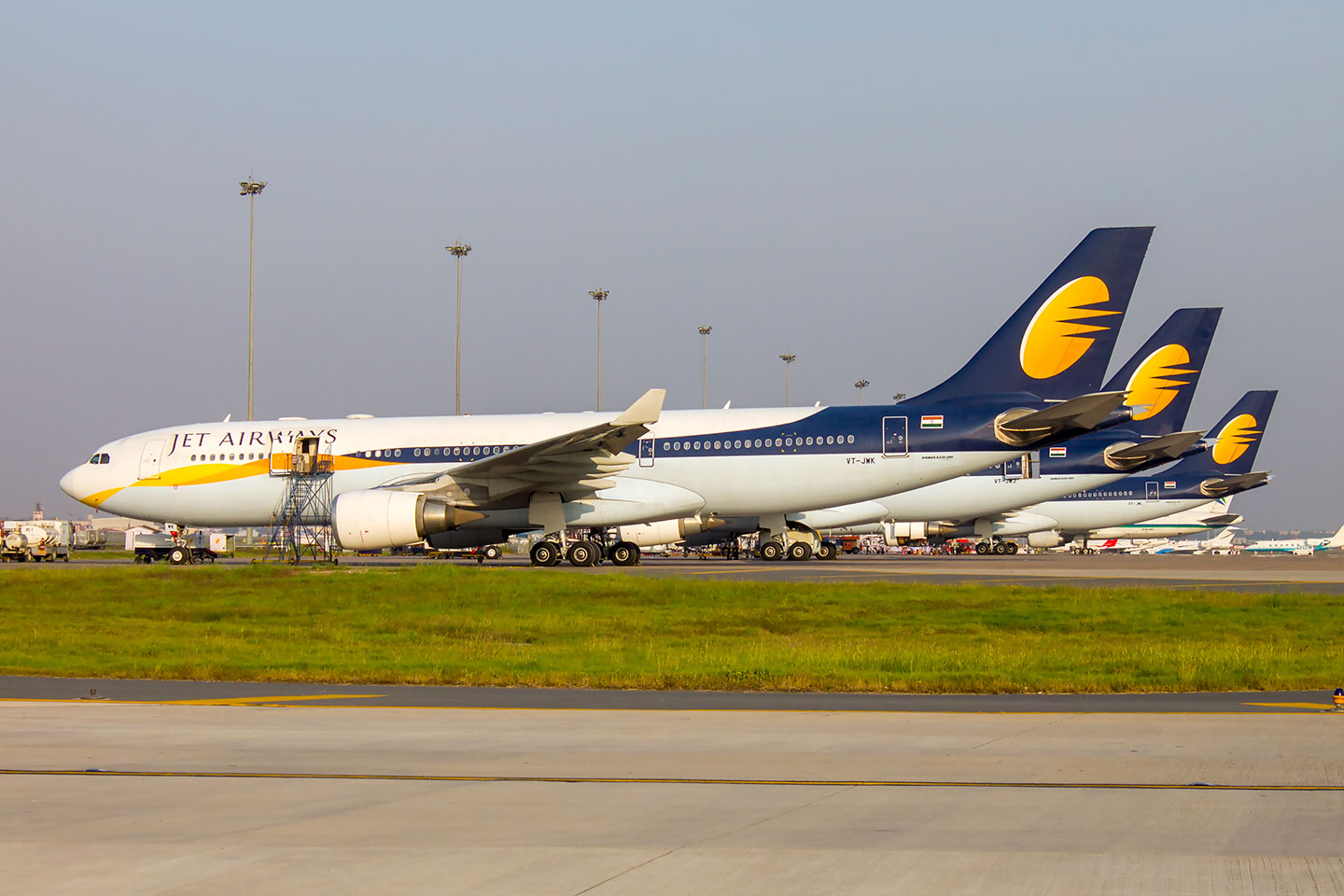The airline business has long had a glamorous mystique. Promotional images of globe-trotting travellers, exotic destinations and chic, jet-setting flight crews have helped underpin this impression.
But despite soaring demand for air travel, especially here in Asia, the aviation business is rarely a lucrative one. Competition is fierce and margins are often razor-thin.
India’s debt-stricken Jet Airways recently halted operations, leaving many passengers stranded and employees jobless – casting a spotlight once again on how much of a brutal business aviation can be.
It might seem suprising then that Jet’s collapse comes amid an unpredented boom for air travel in India. Over the past four years monthly passenger has grown by double-digit percentage points year-on-year, and by by the mid-2020s India is forecast to be the world’s third largest market for air travel.
Just a few years ago Jet was India’s largest carrier by passenger traffic. So how did it get into such trouble?
Part of Jet’s problems have their roots in the firm’s earliest days. Founded in the early 1990s as India’s first private carrier, Jet set out to revolutionise the industry offering a quality, reliable service in a market that had for decades been in the grip of a state-run monopoly.
For the first decade, the new airline seemed to do remarkably well. It focused on the corporate market and quickly grew fans and market share domestically before expanding to serve international routes to Asia, Europe and beyond.
But a rapidly growing market – even with a significant share – does not always mean rapidly growing profits.
Beginning in the mid 2000s Jet found itself struggling to reposition its costly full-service business model against competition from a slew of budget carriers. These offered on-time flights with a no-frills service at a low price, opening up air travel to millions of price-conscious Indian travellers.
Race to the bottom
In response, Jet slashed its own fares, often well below cost, in a bid to maintain market share and ride out its upstart competitors.
As the race to the bottom intensified, base airfares plunged to as low as a few cents, pushing several airlines over the brink.
One was low-cost carrier Kingfisher Airlines which, like Jet, had tried to appeal to passengers with a full service offering.
Founded by a beer tycoon, Kingfisher expanded rapidly serving both domestic and international routes, but eventually folded in 2012 under a mountain of debt owed to banks, staff, aircraft leasing firms and airports.
In 2006, Jet dabbled in a budget airline subsidiary, buying up struggling Air Sahara for US$500 million in cash and rebranding it as JetLite. The venture filled seats but bled cash before eventually being written off nine years later.
Meanwhile Jet was stuck with its full service business model and the costs that come with it, all the while slashing prices for passengers.
Yet the spiralling debt also meant that Jet had few funds available to improve its service offering to keep up with challengers, particularly from fast-growing and well-funded competitors in the Gulf.
Carriers such as Qatar, Emirates and Etihad as well as Turkish Airlines chipped away at Jet’s international routes, undercutting prices while offering better service and a greater network – two key differentiators that usually sway passenger choice on long-haul routes.
In this situation, Jet found itself squeezed domestically and internationally, and was haemorrhaging money on both fronts.
Uncomfortable middle
Domestically, it was trying to compete with budget carriers, yet it remained burdened with a high cost base. Internationally, it was unable to match airlines which simply offered better service to less price-sensitive business travellers.
That put Jet in an uncomfortable middle position: It was neither a premium airline, nor was it a cost leader. And in the aviation business especially, the shaky middle ground is where you tend to die.
But Jet’s problems are also symptomatic of the challenging economics of today’s aviation industry.
Despite huge capital costs, barriers to entry in the airline business are surprisingly low, especially when markets are rapidly expanding. Air Asia founder Tony Fernandes, for example, was famously able to start his airline by mortgaging his house.
On the flipside however, when the going gets tough, barriers to exit are high. Airlines find themselves locked into expensive long-term leasing contracts. In a downturn, there is no demand for offloaded aircraft anyway.
Passengers are more than likely to choose a low-price air ticket one day, while easily switching to another that offers an even better price the next day – especially if they, rather than their employers, are paying for the ticket.
In part, this has been driven by the emergence of online flight comparison services such as Orbit and Skyscanner, which quickly sort passenger travel options by price, travel time, rating and number of stops. Price is the default sorting for the simple reason that for most passengers, it is the determining factor.
In the Indian context, this price sensitivity has been amplified though a combination of extremely cost-conscious consumers and fierce competition. Add to that a recent surge in oil prices and a plunge in the value of the rupee, and ultimately Jet’s debts became unsustainable as it was unable to pass costs on to the consumer in the form of higher fares.
With Jet now completely grounded, the question now is whether the airline will be able to secure new investment and return to operations in some form or other in the near future.
Overseas carriers such as Qatar and Etihad – which has a 24 per cent state in Jet – have both previously expressed strong interest in getting into the Indian market. But complex ownership regulations and a limit on foreign stakes in Indian airlines have put many off.
The booming Indian aviation market certainly means there is huge demand for air travel and much of it is still vastly underserved. The challenge will be for airlines to rework their business models to fit it.




